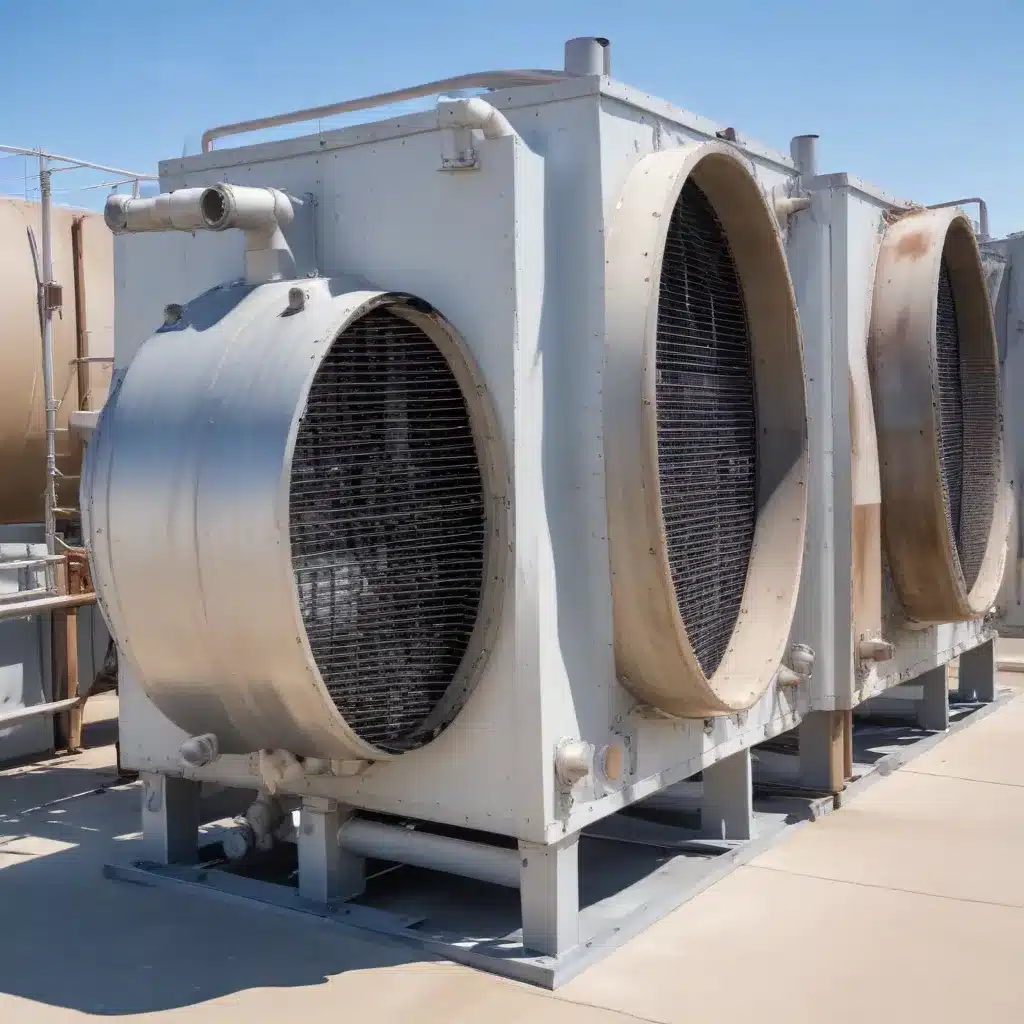
Exploring the Impact of Air-Cooled Heat Exchangers on Sustainable Industrial Operations
Unlocking the Potential of Air-Cooled Heat Exchangers for Enhanced Efficiency and Sustainability
In the vast landscape of industrial processes, the role of heat exchangers stands as a critical component, facilitating the transfer of thermal energy to power essential operations across diverse sectors. As integral elements of intricate systems, air-cooled heat exchangers (ACHEs) play a pivotal role in enhancing efficiency, reducing costs, and mitigating environmental impact.
This comprehensive article delves into the intricacies of ACHEs, exploring their design considerations, maintenance strategies, and the impact they have on sustainable industrial operations. By understanding the nuanced interplay of factors governing ACHE functionality, we can unlock the true potential of these unsung heroes in the quest for energy efficiency and environmental stewardship.
Optimizing ACHE Design for Maximum Efficiency
The efficiency and effectiveness of air-cooled heat exchangers hinge significantly on proper sizing and meticulous selection. ACHEs come in a variety of configurations, each tailored for specific applications and operating conditions. Factors such as fouling tendencies, pressure drops, and material compatibility must be carefully considered during the selection process.
Achieving uniform fluid distribution across the heat exchanger surfaces is a critical aspect that directly influences efficiency. Deviations from an evenly distributed flow can result in hotspots or areas with limited heat transfer, diminishing overall performance. Computational fluid dynamics (CFD) simulations can model and optimize flow patterns, ensuring fluid flows uniformly across the entire heat exchange surface.
The thermal design of an ACHE is also a multifaceted process that involves configuring the arrangement of fluid paths and selecting materials with high thermal conductivity. Counter-flow configurations, where hot and cold fluids flow in opposite directions, maximize the temperature difference and lead to a more efficient heat transfer process. Crossflow designs, on the other hand, offer advantages in terms of simplicity and suitability for specific applications, such as in refrigeration and power plants.
Preventing Fouling and Maintaining Optimal Performance
Fouling, the unwanted accumulation of deposits on heat exchanger surfaces, poses a significant threat to ACHE efficiency and performance. Implementing a systematic approach to regular inspections and routine cleaning is fundamental for fouling prevention. Turbulators and enhanced surface technologies can further discourage the adherence of deposits, mitigating the impact of fouling.
Choosing lubricants and heat exchange fluids with high thermal conductivity and stability is crucial for optimizing ACHE performance and preventing operational challenges. Regular fluid analysis and a proactive replacement schedule help maintain consistent thermal properties and ensure the system operates at peak efficiency.
Proper insulation is a cornerstone of ACHE design, playing a pivotal role in minimizing heat loss and optimizing energy efficiency. The selection of appropriate insulation materials with low thermal conductivity and the determination of optimal insulation thickness are essential to prevent thermal energy dissipation.
Implementing Adaptive Control Systems for Enhanced Sustainability
In dynamic industrial environments where load conditions vary, the integration of variable flow and temperature control systems adds a layer of adaptability to ACHE operations. By adjusting flow rates and fluid temperatures based on real-time demand, these systems contribute to substantial energy savings and prevent the system from operating at maximum capacity when not required.
The concept of heat recovery further transforms the role of ACHEs, positioning them as key players in sustainability initiatives. Heat exchangers can be strategically integrated into industrial processes to preheat fluids, harness waste heat, and contribute to cogeneration systems, reducing overall energy consumption and environmental impact.
Continuous Monitoring and Optimization for Sustained Efficiency
Continuous monitoring and optimization are essential for ensuring the sustained efficiency and reliability of ACHE systems. Distributed sensors, such as temperature, flow, and pressure monitors, provide real-time data, enabling operators to detect irregularities and make informed adjustments.
Leveraging data analytics tools allows for comprehensive analysis of sensor data over time, identifying trends, anomalies, and potential performance issues. This empowers operators to make data-driven decisions to optimize the ACHE system and implement predictive maintenance strategies, minimizing downtime and extending the overall lifespan of the equipment.
Embracing Advanced Technologies for Optimized ACHE Design and Performance
The integration of advanced technologies, such as Computational Fluid Dynamics (CFD) simulations, is reshaping the optimization and design of air-cooled heat exchangers. CFD simulations enable a detailed analysis of fluid flow patterns, thermal performance, and overall system behavior, allowing engineers to explore different design parameters and refine configurations without the need for extensive physical testing.
By harnessing the power of virtual experimentation and analysis, industries can identify the most efficient ACHE designs, troubleshoot issues, and push the boundaries of efficiency. The iterative design process facilitated by CFD simulations accelerates optimization, leading to more reliable and sustainable heat exchanger systems.
Conclusion: Towards a Greener and More Efficient Future
In the intricate tapestry of industrial processes, the optimization of air-cooled heat exchangers emerges as a linchpin for achieving efficiency, reducing costs, and embracing sustainable practices. By implementing strategies that address fluid dynamics, thermal design, fouling prevention, temperature control, and advanced technologies, industries can enhance the performance and longevity of their ACHE systems.
As the world continues to grapple with the challenges of climate change and resource scarcity, the role of ACHEs in sustainable industrial operations cannot be overstated. By leveraging the insights and strategies explored in this article, professionals can contribute to a greener and more efficient future, where energy-efficient heat exchange systems serve as beacons of innovation and environmental responsibility.
Explore the Air Cooled Heat Exchangers website to delve further into the latest advancements, best practices, and industry insights shaping the world of air-cooled heat exchangers and their transformative impact on sustainable industrial operations.

